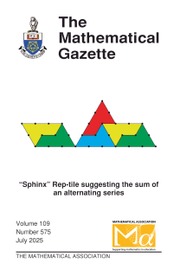Article contents
Absolute prime numbers
Published online by Cambridge University Press: 01 August 2016
Extract
For a long time prime numbers have attracted the attention of mathematicians, especially those primes that possess some sort of a symmetry. The mysterious repunits An = 111… 1(n ), whose decimal representations contain only units, form an important class of them. For a repunit to be prime the number n of its digits must be also prime. But this condition is far from being sufficient: for instance, A 3 = 111 = 3.37 and A 5 = 11111 = 41.271. Some of the repunits are nonetheless prime: A 2, A 19, A 23, A 317 and A 1031, are the only known examples. The question of primeness of the repunits was discussed by M. Gardner and later in [2–4]. It is not clear whether the number of prime repunits is finite or infinite.
Information
- Type
- Articles
- Information
- Copyright
- Copyright © The Mathematical Association 1995
References
- 1
- Cited by

